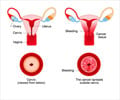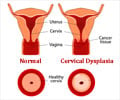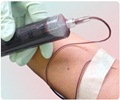
Cervical Cancer Clinical Trials: A Closer Look
These results were presented by lead author Anjali Y. Hari, MD of the University of California, Irvine during the late-breaking oral session of the Society of Gynecologic Oncology’s (SGO) Annual Meeting in March 2023. NRG Oncology designed and led this trial which was conducted in the National Clinical Trials Network with funding from the National Cancer Institute (NCI), part of the National Institutes of Health (NIH).‘ARID1A and PIK3CA the potential drug targets discovered during clinical trials were found to benefit women with cervical cancer.
’
Tweet it Now
“Although the adoption of anti-angiogenesis therapy and immunotherapy have fulfilled previously unmet clinical needs in advanced cervical cancer, nearly all patients will ultimately progress, creating new populations in need of novel treatment. This study, by identifying two promising targets, could potentially lead to new treatment options,” stated Dr. Hari. From April 6, 2009, and Jan 3, 2012, the Phase III NRG-GOG-0240 trial enrolled 452 patients, who provided 112 tumor samples with sufficient DNA and RNA for mutational analysis. In this study, DNA/RNA were co-extracted from FFPE samples after central pathology review at the NRG Biospecimen Bank at Nationwide Children’s Hospital in Columbus, Ohio. DNA/RNA analytes were shipped to the New York Genomic Center and University of North Carolina for whole genome sequencing, whole exome sequencing, RNA sequencing, and microRNA sequencing. Mutational frequencies were compared with those reported in the TCGA and potential molecular targets for biologic therapy were identified. Pattern recognition, mutational clusters, and bioinformatics are ongoing.
Greater than 35,917 total mutations were identified, and >90% of mutations identified from DNA were present in RNA sequences when the expression level was sufficient. Similar to early-stage cases from the TCGA, PIK3CA (an integral component of the mTOR pathway that modulates angiogenic factors) was mutated in 25% (28/112) of advanced/recurrent GOG-0240 specimens. Median OS among PIK3CA mutants was 15.4m (HR 1.0; 95% CI 0.61 – 1.62) and median PFS was 7.5m (HR 0.85; 95% CI 0.54 – 1.34). A significantly higher frequency of ARID1A mutants (previously reported to increase tumor mutational load and sensitivity to immunotherapy) were observed in GOG-240 samples (17%, or 19 of 112) compared with TCGA (5%, p < 0.005). Median OS among ARID1A mutants was 14.3m (wild-type 17.1m; HR 1.18; 95% CI 0.67 – 2.06) and median PFS was 5.3m (wild-type 6.9m; HR 1.0; 95% CI 0.59 – 1.68).
Concerning these results, Dr. Hari commented that, ”We hope that the ongoing bioinformatics, mutational clustering, and pattern recognition incorporating RNA sequencing and microRNA analysis will identify additional potentially druggable targets and further increase our understanding of gene expression in advanced cervical cancer.”
Source-Eurekalert














